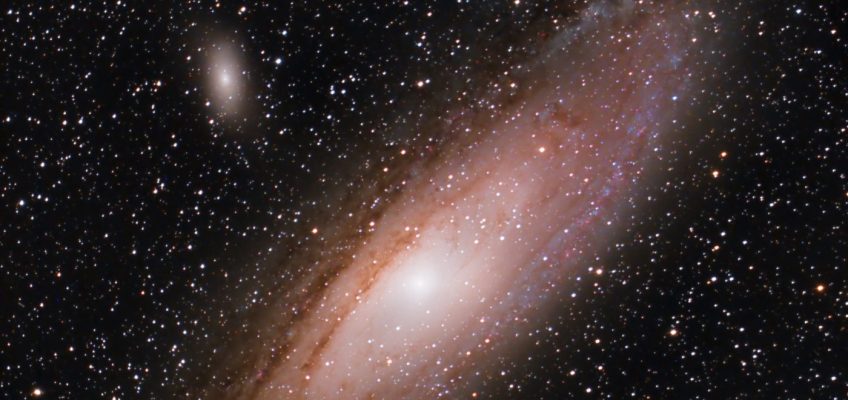If you’re a night owl, this is the perfect time of year for you, as stargazing has now become a late-night delight! Catch an afternoon nap, grab a lawn chair and the June star map. If you have an app like Sky Guide, all the better!
(Mike Lynch)
The transition in the night sky is just about complete. The stars and constellations of winter are pretty much gone, setting well before the sun. In early June you can still see a few holdovers. Among them are Castor and Pollux, in the constellation Gemini the Twins. You can see them side by side in the low west-northwestern sky. A little to the right of them is the bright star Capella in the constellation Auriga the Charioteer.
A little higher above the western horizon, look for a right-leaning backward question mark. That’s the chest and head of the spring constellation Leo the Lion, with the bright star Regulus at the bottom of the question mark, marking the lion’s heart. A triangle of three moderately bright stars to the upper left of the question mark makes up the hind end and tail of the celestial feline. Leo will have a visitor throughout June, the planet Mars, perusing the southern side of Leo. On the nights of June 16-17, Mars will pass within one degree of Regulus, making for a great show!
Face north and lie back on a lawn chair, and you’ll easily see the Big Dipper in the high northwest sky hanging upside down by its handle. The Big Dipper isn’t an official constellation, but it does outline the rear end and tail of Ursa Major, the Big Bear. Just to the lower right is the fainter Little Dipper, standing on its handle with Polaris, the North Star, at the end of the handle. The Little Dipper doubles as the actual constellation Ursa Minor, or Little Bear.
Extend the arc of the handle of the Big Dipper beyond the end of the handle, and you’ll run right into a very bright orange-red star. That’s Arcturus, the brightest star in the evening sky this month. It’s more than 20 times the diameter of our sun and around 37 light-years away. The light we see from Arcturus tonight left that star in 1988 when the No. 1 movie at the box office was “Die Hard” with Bruce Willis. Arcturus is the brightest star in the constellation Bootes the Herdsman, although the constellation really looks more like a giant nocturnal kite with Arcturus marking the tail.
Over in the east, the stars of summer are making their initial evening appearances. Leading the way is the Summer Triangle asterism, made up of the bright stars Vega, Deneb and Altair. The highest and brightest is Vega, the brightest star in the constellation Lyra the Harp. To the lower left of Vega is Deneb, the brightest shiner in Cygnus the Swan, rising sideways with the asterism known as the “Northern Cross,” within it. Altair, on the lower right side of the Summer Triangle, is the bright star in the constellation Aquila the Eagle.
The full moon in June will officially be on the 11th. It’s often referred to as the Strawberry Moon in Native American culture, and it’s also called the Rose Moon and the Honey Moon along with other monikers. You can’t help but notice that the full moon this month takes a very low arc across the sky from rising to setting. It’s nearly mirroring the path taken by the sun on the first day of winter.
Speaking of seasons, the summer solstice is on June 20-21 depending on where you live on our home planet. On this summer solstice day, the sun shines directly overhead at noon along the Tropic of Cancer. In the northern hemisphere, it’s the longest day of the year and the shortest night of the year. See if you can pull an all-nighter under the stars!
There is a meteor shower this coming week on June 7, although there’s a big catch to it. Most of this meteor shower occurs during the day, making it nearly impossible to see. That’s why it’s called the Daytime Arietids. However, you might see some meteors during the early morning twilight.
Enjoy the beginning of summer stargazing!
Mike Lynch is an amateur astronomer and retired broadcast meteorologist for WCCO Radio in Minneapolis/St. Paul. He is the author of “Stars: a Month by Month Tour of the Constellations,” published by Adventure Publications and available at bookstores and adventurepublications.net. Mike is available for private star parties. You can contact him at mikewlynch@comcast.net.
Related Articles
Skywatch: High heavenly hair
Skywatch: Virgo the Virgin, a large but faint constellation
Skywatch: Crowded space
Skywatch: Dippers and bears flying high
Skywatch: A crow, a cup and a water snake


Leave a Reply